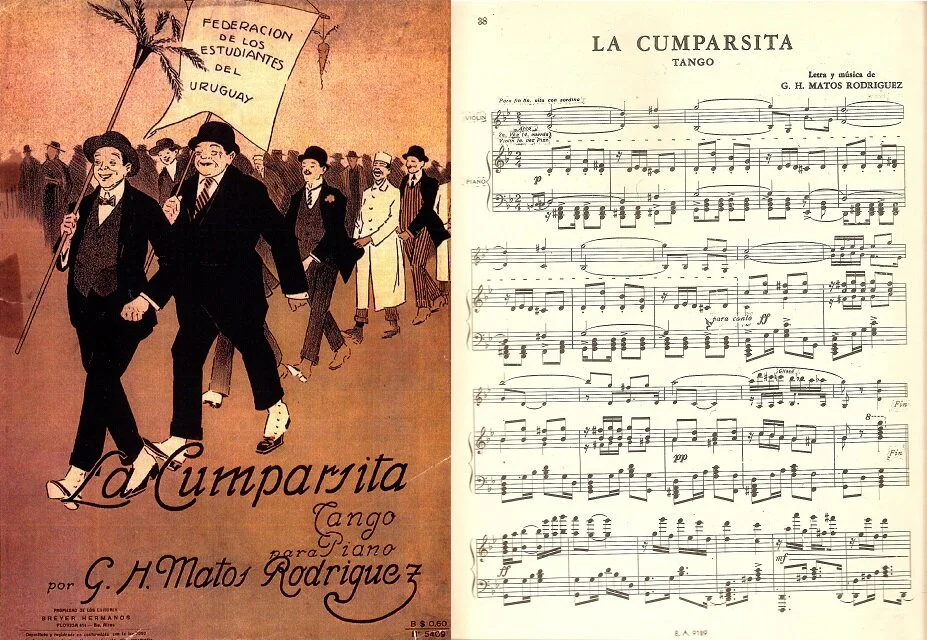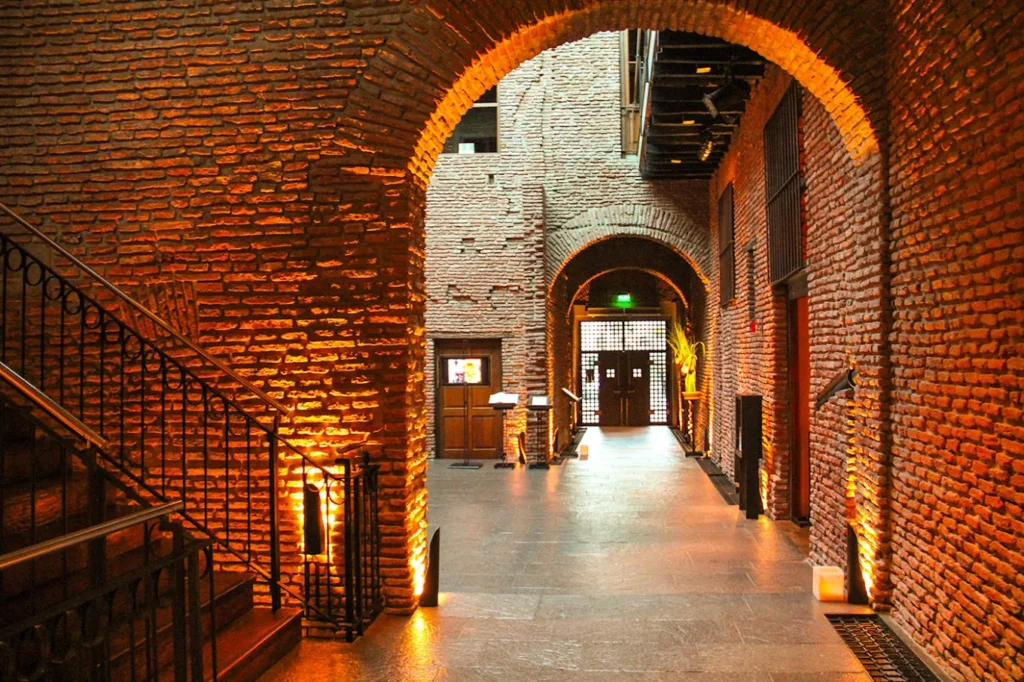Buenos Aires doesn’t greet you politely: it pulls you in. The moment you arrive, the city starts talking. Not only in words, but in sounds: a steak sizzling on the grill, a bus braking just a little too late, laughter from a sidewalk table, and somewhere in the distance… tango.
At first, it might seem like background music. Romantic, nostalgic, cinematic. But give it a second. Tango, like Buenos Aires, doesn’t stay in the background for long. It pushes forward, takes space, fills the room. Tango demands to be felt (because let’s be honest, nothing truly Argentine would ever settle for being background).
It’s not just music or dance, but it’s how Buenos Aires breathes. You’ll find it in the cobblestones of San Telmo, in the melancholy of a bandoneon echoing through the night, in the elegance, tension, and delicious chaos of the city itself.
Yes, Buenos Aires might flirt with a “European with a twist” aesthetic, but don’t be fooled: this city doesn’t follow anyone else’s rhythm. It’s nostalgic, dramatic, intense, and unapologetically itself. Just like tango.
This is a travel guide, but not your average one. No stiff explanations, no clichés. Just a deep dive into the living, breathing culture of tango in Buenos Aires: where it came from, where to see it, how to take part of it, why it still matters today and what else you can do in the city. Let’s get into it.
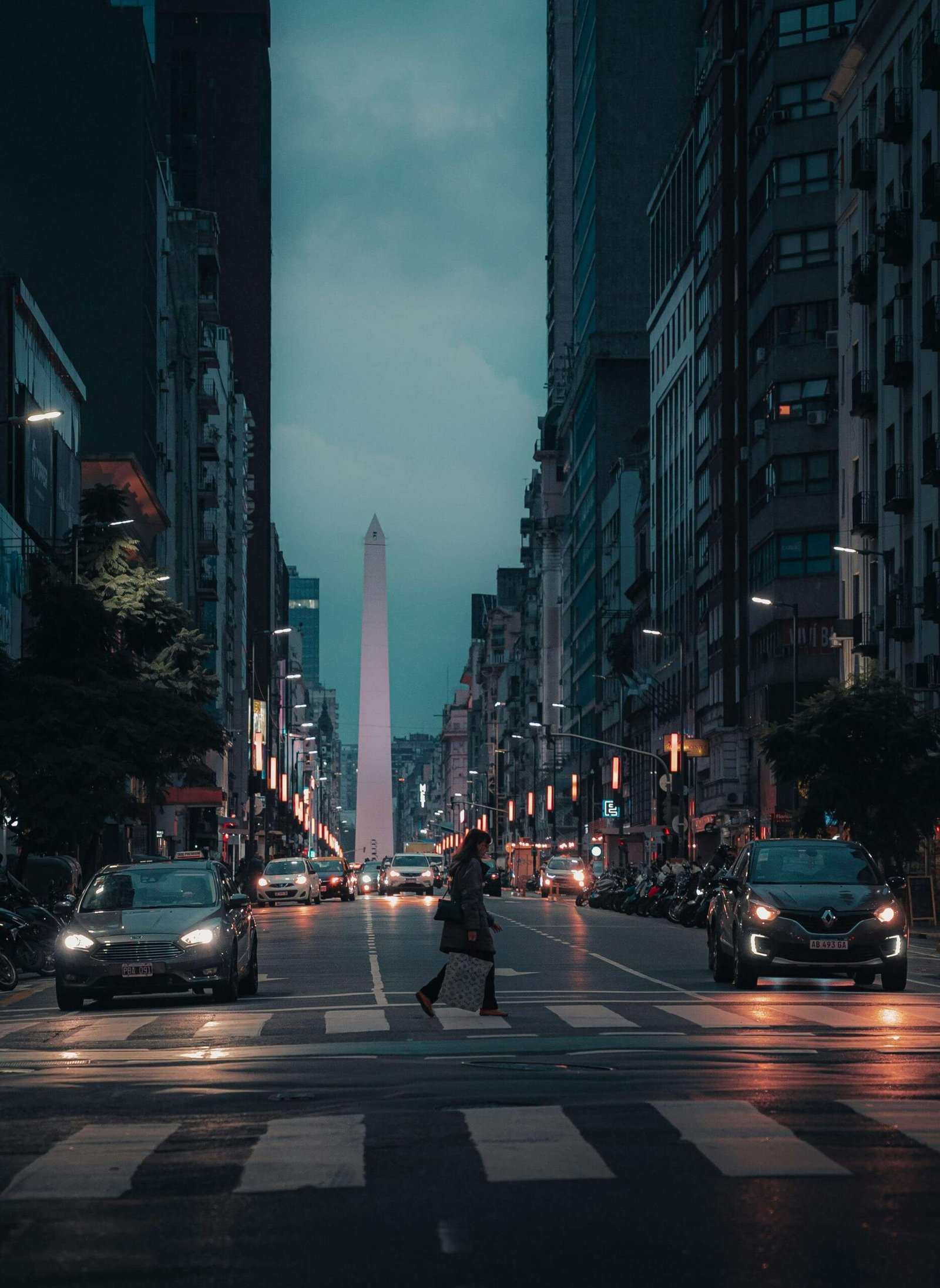
How Tango and Buenos Aires Shaped Each Other
To understand Buenos Aires, you have to understand tango.
And vice versa. Their connection is symbiotic: one doesn’t truly exist without the other. Tango isn’t just a cultural icon; it’s part of the city’s DNA.
Born in the late 19th century in the working-class neighborhoods of Buenos Aires and Montevideo, tango wasn’t polished or glamorous, quite the opposite of what many imagine today. It came from the streets, from immigrant-heavy neighborhoods where Italian, Spanish, African, and criollo (meaning locally born people of European descent) cultures collided, blended, and gave birth to something entirely new.
Tango in its origins expressed what couldn’t be said out loud: the ache of exile, the messiness of rebuilding a life, the sensuality of late nights, the tenderness of fleeting romance. It was danced in brothels, played in crowded patios, whispered through alleyways. And for decades, Argentina’s elite dismissed it, until Europe applauded, and Argentina suddenly listened.
Like so many things in Argentina, tango’s history is about migration, fusion, and contradiction. It couldn’t have been born anywhere else. The Cuban habanera, Argentine milonga, Uruguayan candombe, African rhythms, European polkas left fingerprints on its form.
Today, tango is recognized by UNESCO as an Intangible Cultural Heritage of Humanity. But more importantly, it’s still alive.
And there’s so much more to say…
👀When you’re ready for the deeper version, we tell it right here.
Where to See Tango in Buenos Aires: The Ultimate 2025 Guide
If you’re wondering where to see tango in Buenos Aires, the short answer is: almost everywhere. The thing is… how you want to experience it. This guide will walk you through the best places to see and live tango.
Tango Dinner Show: All Set, Little Spark
Let’s start with the classic tango dinner shows in Buenos Aires. These venues combine dance and dining into one experience, an idea that sounds perfect on paper. But here’s the thing: tango is intense, emotional, and layered. So is a great meal. And trying to give both the attention they deserve at the same time? It’s tricky.
The dinner part often suffers, especially at large-scale shows. With dozens, or even hundreds, of guests to serve at once, quality and focus can easily slip. You might find yourself distracted during a dramatic choreography by a steak that’s gone cold… or missing the nuance of a tango performance because the dessert just landed on your plate. When everything is happening at the same time, nothing gets the attention it deserves.
That said, these shows still do an incredible job of staging tango for the world. Rojo Tango is all about elegance and exclusivity, with a polished performance set in a luxury hotel lounge. El Viejo Almacén captures the nostalgic essence of tango in a historic venue. La Esquina de Carlos Gardel offers a glamorous experience filled with drama, while Café de los Angelitos blends tradition and modern flair with impressive production value.
Each one is a beautiful interpretation of tango, but built for large audiences. In that scale, something gets lost. The silences. The tension. The intimacy. The things that make tango truly tango.
The standout tango show in Buenos aires
If you’re asking yourself (or google😅) where to see tango in Buenos Aires and you’re craving something more personal, Secreto Tango Society offers a different path. It skips the dinner (but not the wine, don’t worry), the stage, and the separation between performer and guest. Instead, it brings you into the heart of the experience. Just twenty people in a room, with musicians and dancers moving between the audience. It’s quiet. It’s close. It’s alive.
If you’re looking for something real, intimate, and specially something that doesn’t come with a side of mashed potatoes, this might be the best tango show in Buenos Aires.
Curious about how each option compares? Check our full guide to the best tango shows in Buenos Aires.
Or skip the research and book your seat at Secreto Tango Society, a show that chooses depth over distraction.
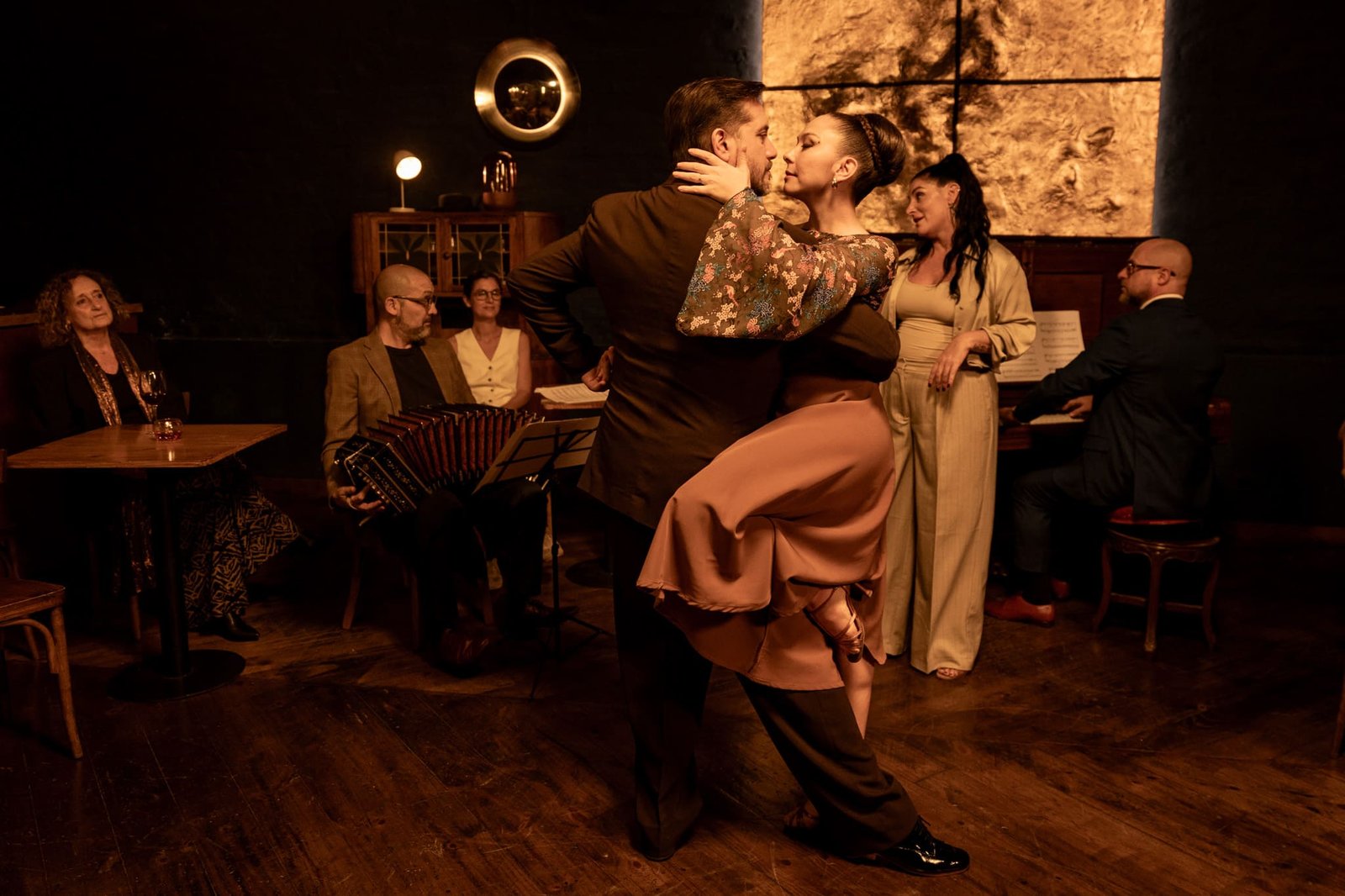
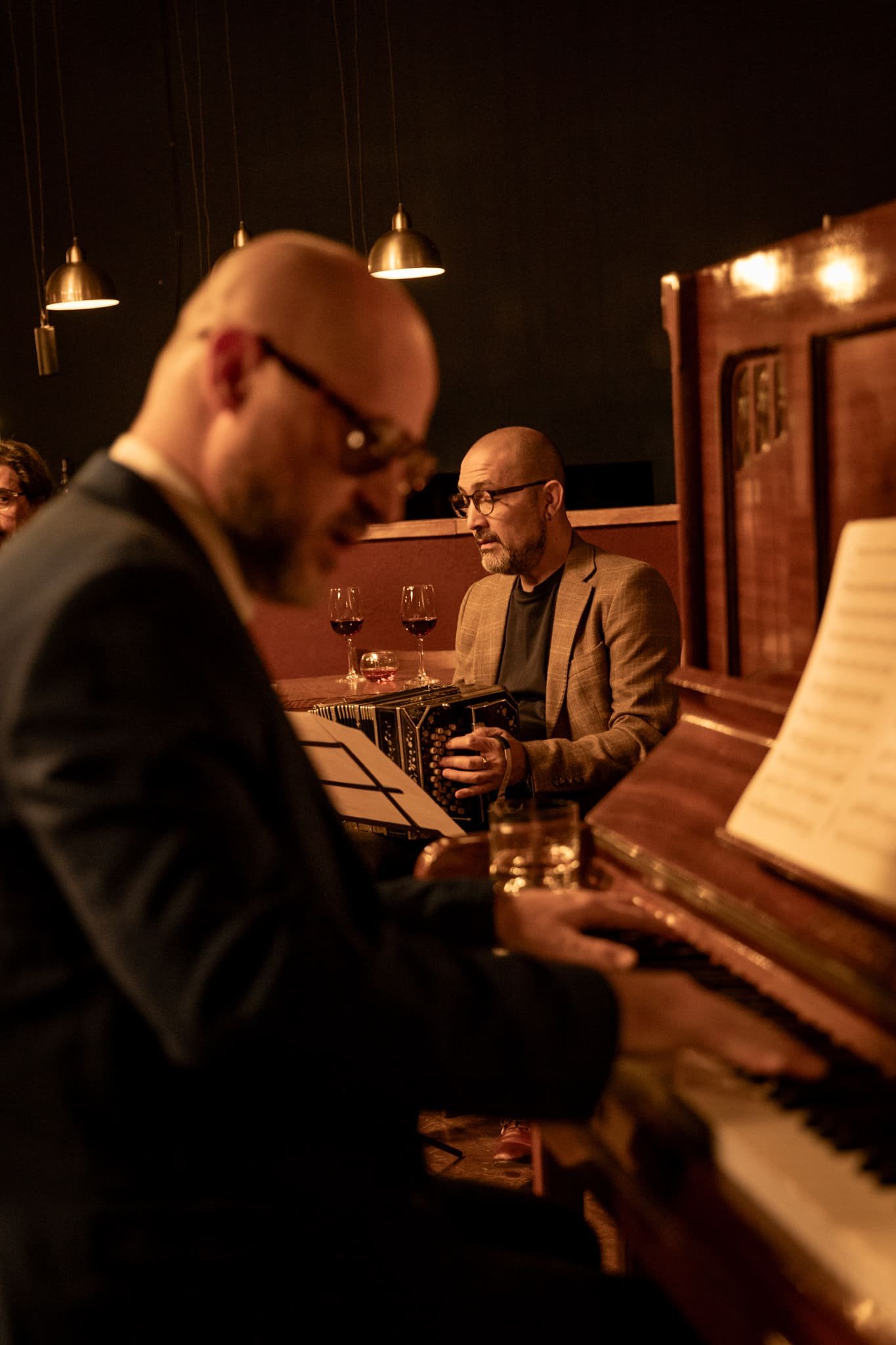
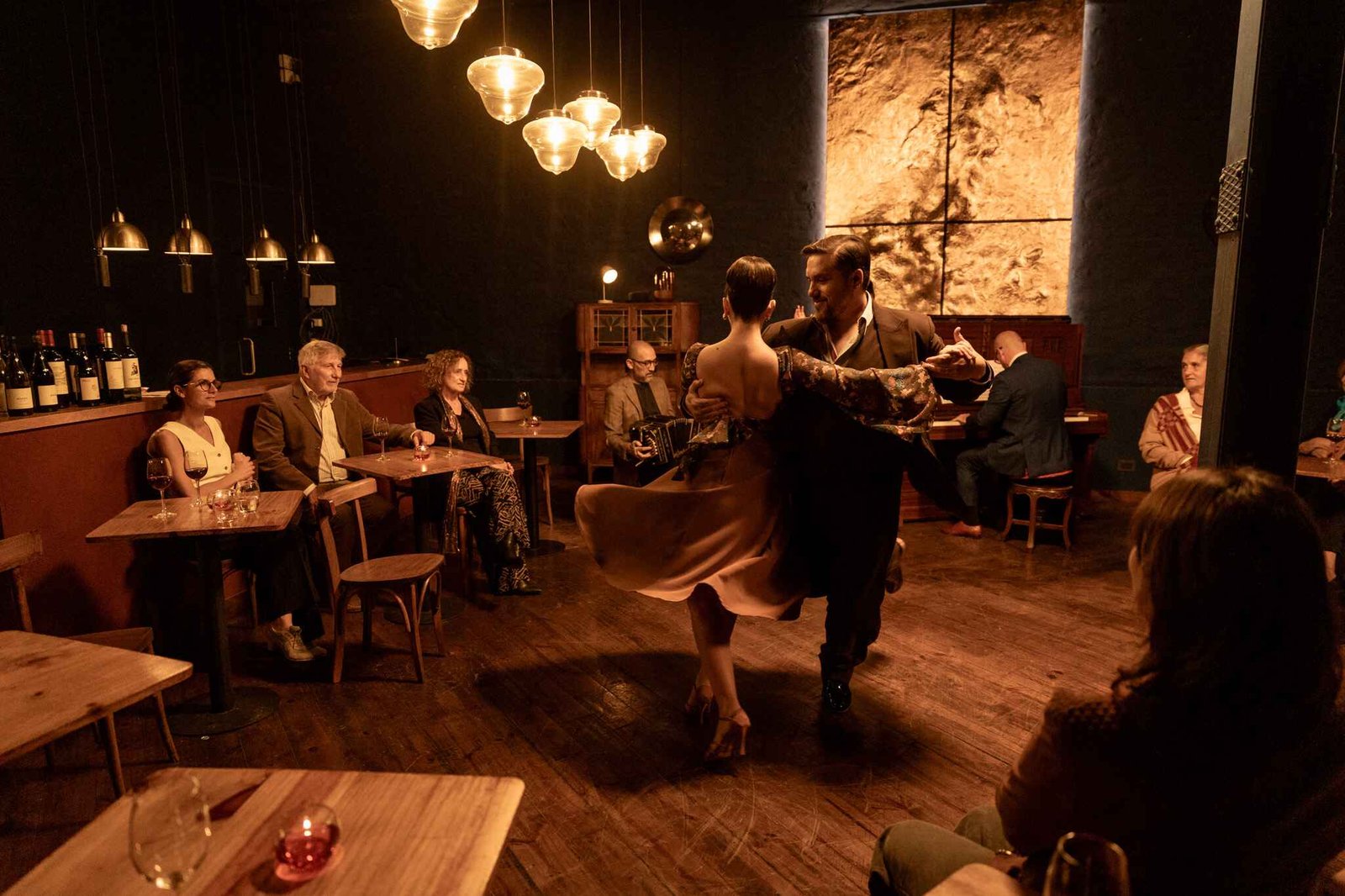
Tango in Buenos Aires: Learn It, Dance It, Celebrate It
Where to Learn Tango
Let’s start at the beginning: tango lessons. You don’t need rhythm, a partner, or fancy shoes. A little curiosity and an open mind will be a good start. Places like La Viruta are perfect if you’re looking for something lively and relaxed. It’s one of the city’s most beloved social spaces, with music, laughter, people of all ages, and zero pressure. You can show up solo, join a beginner class, and be dancing in minutes.
Prefer something a bit more structured? DNI Tango offers a deeper dive into the technique and feeling behind the dance. Their instructors are professionals who take the time to explain how tango works, not just with your feet, but with your posture, connection, and presence.
Milongas: testing what you learned
Once you’ve got a feel for it, it’s time to discover the real magic: the milonga. A milonga is a social tango gathering, where people come to dance, meet, and enjoy the music. We could define it as the real thing.
Some milongas, like Salón Canning, are traditional and elegant. Expect polished dancers, formal codes of invitation, and the kind of grace that takes your breath away. Others, like La Catedral, are pure Buenos Aires chaos, in the best way. Imagine an old warehouse filled with mismatched chairs, cool (but bohemian) painting and barefoot dancers moving to the beat of a live band. Somewhere in between, Maldita Milonga offers a perfect mix: live music, friendly vibes, and a diverse crowd of locals and travelers.
Tango Festivals: Get Inspired
And if your trip lines up with August, you’re in luck. That’s when Buenos Aires hosts the BA Tango Festival and World Cup, the biggest tango event on the planet. The city turns into one big celebration: free concerts in plazas, workshops for all levels, world-class performances, and a competition to crown the best tango dancers in the world. It’s electrifying, emotional, and unforgettable.
📍 Want to take your first step into tango culture? Explore our guide to the best tango experiences in the city

Buenos Aires: A City That Dances to Its Own Beat
Tango might be the soul of Buenos Aires, but the city has many rhythms, and each neighborhood plays its own melody. Let’s dive into what to do in Buenos Aires.
Picture this: it’s a Sunday afternoon and you’re wandering through San Telmo. The air smells like grilled chorizo (not my favorite, but a must-try), an old tango floats from a nearby speaker, and someone hands you a “glass” of wine, in a plastic cup. Around the corner, a couple dances in the street, not for show, just because that’s what Sundays feel like here.
Then, just a few subway stops away, you land in Palermo, where the city reinvents itself. Concept stores, speakeasy bars hidden behind barbershops, tattoo studios that double as art galleries, brunch that turns into cocktails. It’s Buenos Aires with sneakers on.
Recoleta is more classic, more Parisian in spirit. Think lined boulevards, domed buildings, and elegant cafés with little round tables. Visit the Recoleta Cemetery and marvel at its silent architecture, or better yet, spend the afternoon reading in Plaza Francia with a medialuna (now we’re talking) in hand.
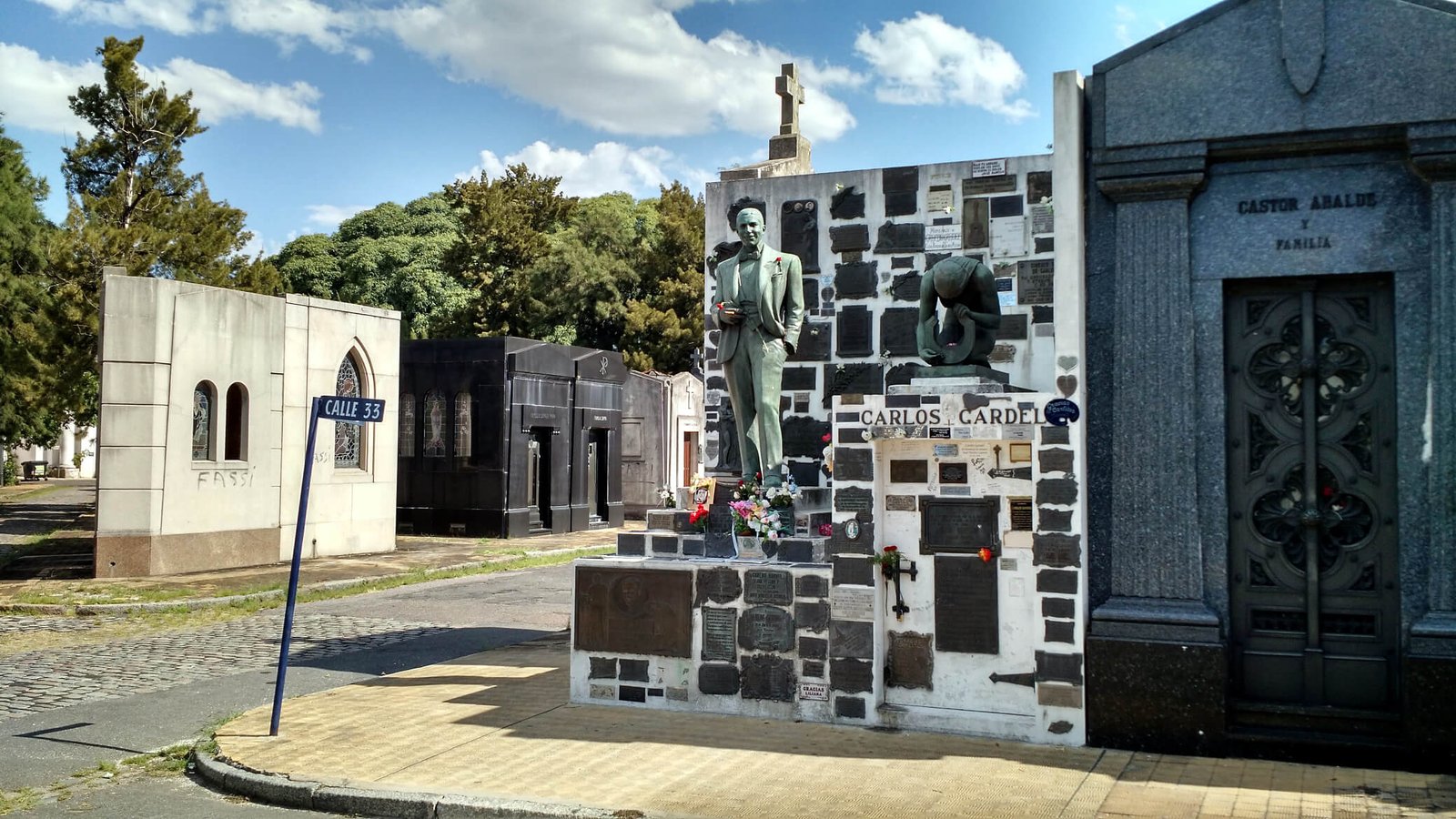
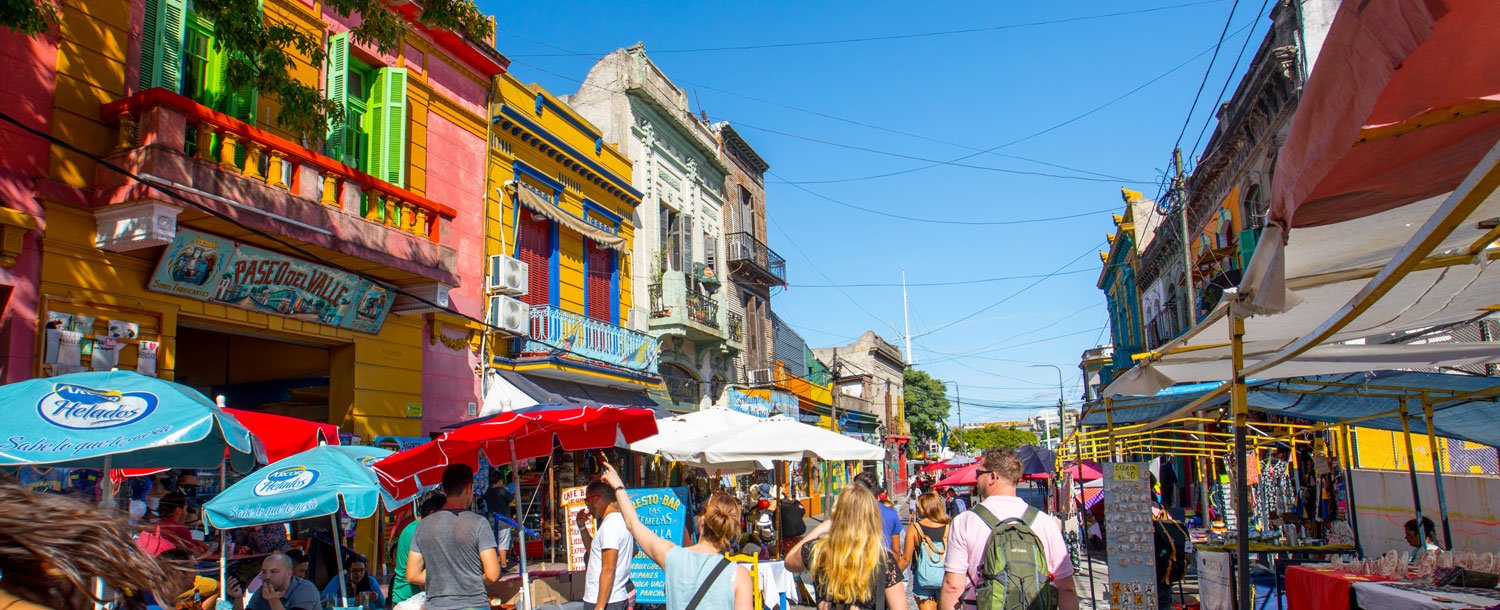
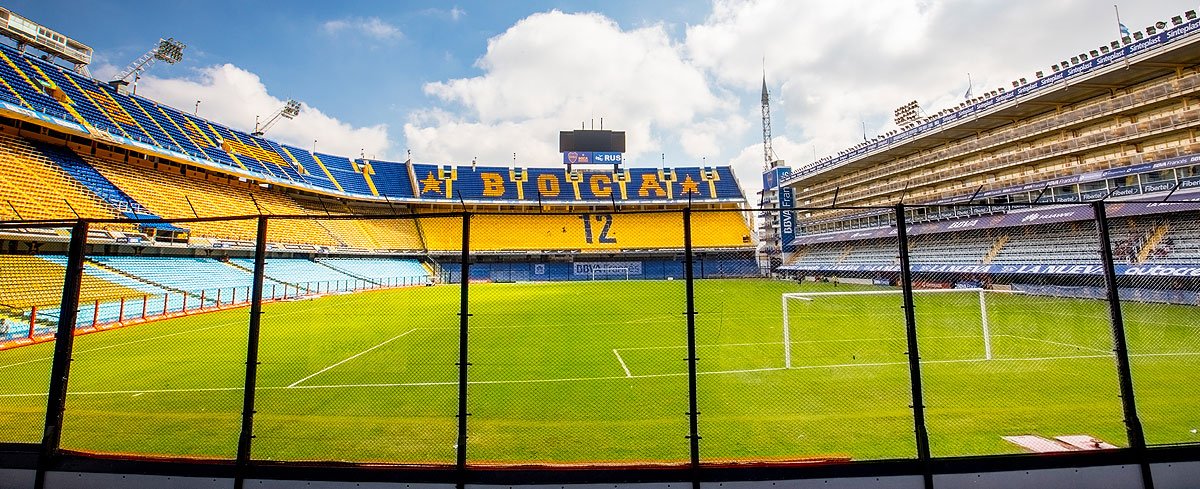
And then there’s La Boca, unapologetically loud and colorful. Its corrugated houses painted in primary colors, tango dancers posing for tourists, murals that scream local pride. It’s gritty and vibrant, the way Buenos Aires was never meant to be polished.
But if you wonder what to do in Buenos Aires, let’s not forget what truly holds this city together: its culture. Buenos Aires is a city of theater and Corrientes Avenue is its Broadway, and a night there, squeezed between locals, watching a play or musical, is a rite of passage. And just a few blocks away, the majestic Teatro Colón stands as one of the most acoustically perfect opera houses in the world. Whether you’re into a drama8, a tango show or a Mozart tribute, this city has a seat waiting for you.
And now, we must talk about food, because if tango is the soul of Buenos Aires, gastronomy is its love language. An asado isn’t just grilled meat: it’s a five-hour ceremony of slow-cooked ribs, provoleta, chimichurri, and chatting. A milanesa a la napolitana with papas fritas (fries) tastes like childhood (even if you didn’t grow up here). Empanadas come with regional pride and dulce de leche is legally required to be in every dessert (not really but it should).
📍 Want to make the best out of Buenos Aires? Check this guide that captures just the right balance of tango, culture, and flavor.
What you might be wondering about Tango in Buenos Aires
Do I need to know how to dance to enjoy tango in Buenos Aires?
Nope. You can enjoy world-class shows, take beginner-friendly tango lessons, or just watch dancers at a milonga. This genre welcomes everyone.
What should I wear to a tango show?
Smart casual is always a good idea. Some venues are fancier than others. Here’s our style guide to help you decide.
Can I join a milonga as a beginner?
Absolutely. Many offer pre-milonga classes. Be respectful, observe the codes, and you’ll fit right in.
When’s the best time to experience tango in Buenos Aires?
Any time of year, really, but August stands out because of the festival. Still, you’ll find tango every night, all year long.
Do i need to book in advance for a tango show?
Yes, specially in high season. To preserve intimacy and connection, Secreto Tango Society has its space limited to 20 guests, and it fills up fast.
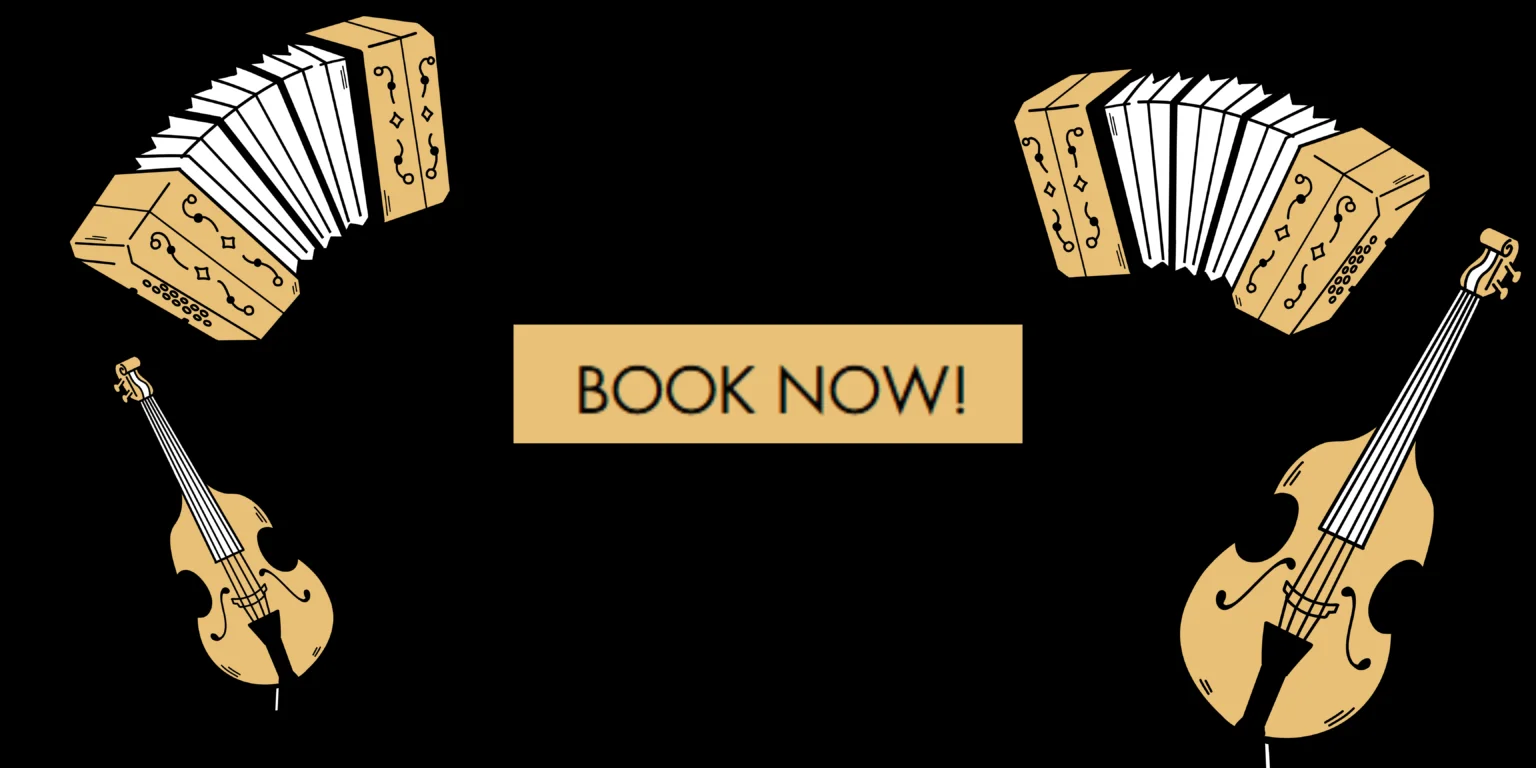
Final Note: A City, a Dance, and a Story You Can Step Into
So here we are: at the end of this guide, but maybe (i hope) at the beginning of your tango journey in Buenos Aires.
We’ve talked about its roots, its history, and why tango still pulses through this city’s veins. You now know where to see tango in Buenos Aires, how to learn it, how to feel it live, and how it weaves into the city’s daily rhythm, from the stage to the street, from the milonga to the memory. You’ve met the best tango shows, tango festivals, and how Buenos Aires dances to more than one beat. If this helped even a little to spark your curiosity, we’re already glad.
Now we just want to say: thank you. Thanks for reading, for wondering, for letting yourself imagine. Because tango, like Buenos Aires, isn’t meant to be rushed through or checked off an itinerary. Tango is meant to be lived. Slowly. With all the senses.
If you’ve made it this far, maybe that sound you barely noticed at the beginning? It’s not so faint anymore. Let it guide you, not to the loudest place, but to the one where it makes the most sense.
At Secreto Tango Society, we keep things simple: a hidden room, twenty people, music that breathes, and a feeling that doesn’t need translation.
Our door’s open. The rest is up to you.
How useful was this post?
Click on a star to rate it!
Average rating 5 / 5. Vote count: 5
No votes so far! Be the first to rate this post.


